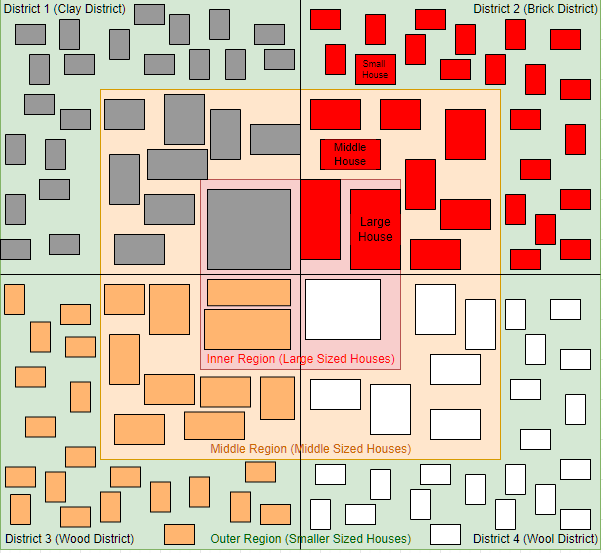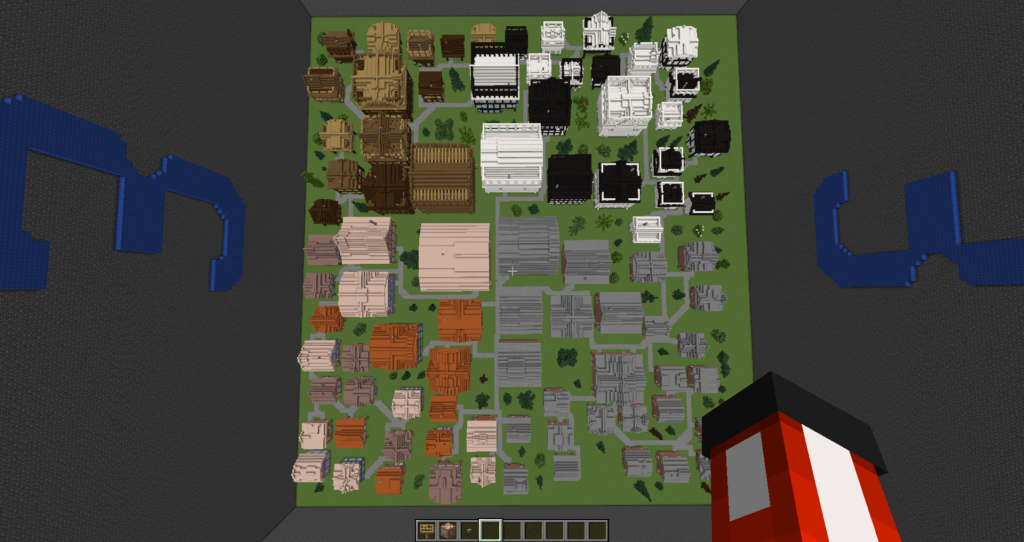Procedural content generation (PCG) refers to algorithms used to automate the creation of game material that an individual would typically produce. Despite being used in various projects, PCG is still widely acknowledged as an under-researched area in artificial intelligence (AI). Hence, this study has attempted to offer a deeper understanding of PCG in Minecraft by seeking to define the problem thoroughly and reviewing the current state-of-the-art research.
Being heavily motivated by the Generative Design in Minecraft (GDMC) competition, the proposed solution is a Minecraft settlement generator that uses PCG to emulate humans in constructing
settlements. By constantly analysing the changing environment, it would be ensured that the structures be placed in such a way as to avoid the occurrence of overlaps. The settlement would also include districts, each generating a different ambience, where structures would adhere to a consistent architectural and aesthetic style. Moreover, the creation of more prominent structures would occur towards the centre of the settlement, while generating smaller-sized buildings on the outskirts. It would also be ensured that each newly created building would be connected to the settlement by producing the shortest path found between the newly generated building and the
already existing buildings. This would be achieved by utilising the A* pathfinding algorithm.
The analysis of the proposed settlement generation employed a variety of methodologies. These included an expressive range analysis, and setting up a judging panel to assist in the emulation of
the judging process in the GDMC competition. Three different settlements were used for this process, two of which were the first and second-placed settlements from the competition’s 2018 iteration, and the third being the generator being proposed.
After the judges assessed the three settlements, a focus group session was conducted to obtain comprehensive insights about the generation under review. The results indicated that the
implementation performed well, gaining the highest score in the aesthetics category and obtaining a good overall score.

generation using the implementation under review

implementation
References/Bibliography:
[1] C. Salge, M. C. Green, R. Canaan, and J. Togelius, “Generative design in Minecraft (GDMC): Settlement generation competition.” Association for Computing Machinery, 2018.
[2] G. Smith, “Understanding procedural content generation: A design- centric analysis of the role of PCG in games.” Association for Computing Machinery, 2014, pp. 917–926.
Student: Nathan Camilleri
Course: B.Sc. IT (Hons.) Artificial Intelligence
Supervisor: Dr Vanessa Camilleri
Co-Supervisor: Dr Antonios Liapis
